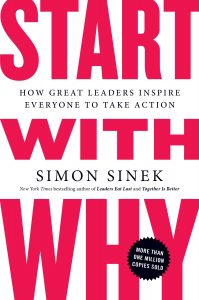
“People don’t buy what you do; they buy why you do it. And what you do simply proves what you believe.” – Simon Sinek
All companies in the world know what they do, which is why it’s the first thing they inform the people about. But rationale can be mostly inadequate. That must be because emotions or sentiments overrule reason almost every time.
Only when we know why we do the things we do, do we have a sense of belonging. That’s why it’s a more compelling way of getting people to make decisions.
Exceptional leaders and organizations take this route. They start all communication with why they do things, followed by how they do it. And in the end, they reveal what it is they actually do.
If you want to inspire, start by communicating why you do, instead of what you do, and you’ll see a massive transformation in engagement.
# Key Takeaways:
– The importance of starting with the “why” or purpose behind an idea or business, rather than just focusing on the “what” or product/service.
– The concept of the “Golden Circle” which consists of three layers: why, how, and what.
– The power of inspiring and connecting with people through a strong sense of purpose and belief.
– The role of leaders in creating a culture of trust, collaboration, and innovation by communicating the “why” effectively.
# Practical Application:
– When starting a new business or project, begin by defining the “why” and use it as a guiding principle for decision making.
– Use the “Golden Circle” to communicate the purpose and values of the organization to employees, customers, and stakeholders.
– Encourage employees to share their own personal “whys” and align them with the company’s purpose.
– Continuously communicate and reinforce the “why” to maintain a strong sense of purpose and motivation within the organization.
# Valuable Insights for Leaders/Managers:
– Chapter 3: “The Golden Circle”
– provides a framework for understanding the importance of starting with the “why” and how it can drive success.
– Chapter 6: “The Emergence of Trust”
– discusses the role of trust in creating a successful organization and how leaders can foster it.
– Chapter 8: “The Courage to Lead”
– explores the qualities of effective leaders and how they can inspire and motivate their teams.
# Case Studies/Examples:
– Apple – the company’s success is attributed to its strong sense of purpose and belief in challenging the status quo.
– Martin Luther King Jr. – his “I Have a Dream” speech is used as an example of how a strong sense of purpose can inspire and unite people.
– Southwest Airlines – the company’s focus on its purpose of providing affordable and convenient air travel has led to its success and strong company culture.
Leave a Reply